The main purpose of this ongoing blog will be to track planetary extreme, or record temperatures related to climate change. Any reports I see of ETs will be listed below the main topic of the day. I’ll refer to extreme or record temperatures as ETs (not extraterrestrials).😉
Main Topic: Could Mexico City Be the Next Major City to Have a Climate Calamity After Port Alegre?
Dear Diary. The first major world city to get devastated by climate change related weather this year was Port Alegre in the Rio Grande do Sul State of southern Brazil due to extreme flooding. More rain is causing problems as of this writing:
Heavy rains return to southern Brazil, flooding even higher ground in Porto Alegre (msn.com)
Another climate tragedy in the making can be directly tied to Heatwave Exxon, which I wrote about here:
And yes, the Exxon oil company as well as the rest of the giant petrol companies can be tied to climate tragedies like the ones going on during 2024. That’s why I am naming heat waves after oil companies.
Heatwave Exxon is now producing widespread all-time records such as the most recent ones in Mexico City:
Now Mexico City, which is so rich in culture and life, may succumb to drought produced by a heat dome that has been over Mexico for months and literally years and is forecast to remain over the country well into June. Port Alegre in Brazil is drowning while Mexico City us drying up. Yet the plight of Mexico City can also be blamed on poor city planning and bad infrastructure. For more details here is a new Washington Post article:
Mexico City’s water ‘Day Zero’ may come even for the wealthiest residents – The Washington Post
MEXICO CITY — Raquel Campos’ water issues started in January, when her condo building’s manager sent residents a message saying that the city hadn’t delivered water to its cistern. Four days later, taps in the upscale residence went dry.
Campos has lived in the wealthy Polanco neighborhood for 18 years and said she has never experienced water issues like this. Her husband paid to shower at a nearby hotel and she called water delivery companies that were overwhelmed with a sudden deluge of requests from the neighborhood. The water in Campos’ building came back within a few days, but with much lower pressure. Water is now delivered about every two weeks. Each unit has paid to cover the cost, increasing their monthly condo expenses by 30 percent.
Water scarcity has long been an issue in Mexico City, with the brunt of the shortages happening in lower-income neighborhoods on the outskirts of the city center. But recently, residents in some of the city’s wealthier neighborhoods have also been running out of water as hot temperatures, low rainfall and poor infrastructure have converged to create a crisis across the sprawling metropolis.

Rafael García and Raquel Campos at their apartment. Wealthier neighborhoods like theirs are now facing water shortages, leading some to request water tanker deliveries to meet their needs. (Luis Antonio Rojas/for The Washington Post)
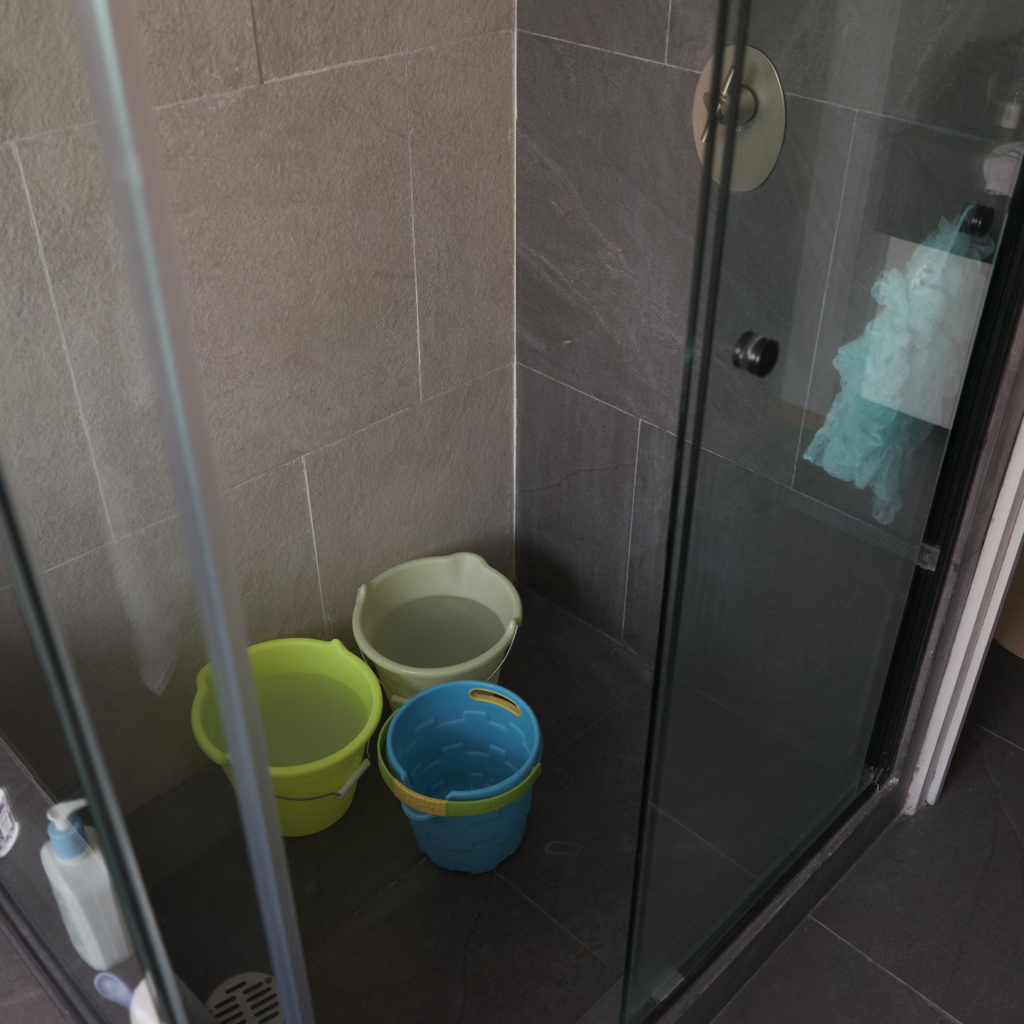
Buckets of recycled shower water in García and Campos’s bathroom. (Luis Antonio Rojas/for The Washington Post)
Mexico City gets about a quarter of its water from the Cutzamala system, a series of reservoirs, water treatment plants and lengthy canals and tunnels, which is running dry. Some say the system could be unable to provide water by June 26, known as “Day Zero” in the metropolitan area of 22 million, although scientists say rainfall could avert that disaster. As of May 21, the Cutzamala system is at 28 percent of its capacity, according to the Basin Agency for the Valley of Mexico, a historic low.
Even though rain would help alleviate the strain on the system, it could also “cause a false sense of security” in a city that needs to use less water and create better infrastructure to make use of rainfall, said Christina Boyes, a professor of international studies at the Center for Economic Research and Teaching in Mexico City.
Mexico City’s water issues have become a point of contention ahead of the country’s June 2 presidential election. In a Sunday debate between Claudia Sheinbaum of Mexico’s governing Morena party, and Xóchitl Gálvez, who represents an opposition coalition, Gálvez blamed the water issues on the inaction of Sheinbaum’s party. Sheinbaum, an environmental scientist who co-authored the 2007 Nobel Prize-winning Intergovernmental Panel on Climate Change report, is the former mayor of Mexico City.
“Right now, we are experiencing one of the worst droughts, because the Morena government did absolutely nothing to solve the problem,” Gálvez said. “Claudia, you were unable to resolve the water issue. You call yourself a scientist, you boast about your awards and today we continue with environmental emergencies.”
The following day, Sheinbaum said the ongoing drought stressed the Cutzamala system beyond expectations and decreased the supply by half. “No one could have foreseen this would happen in the city,” she said.
In the meantime, residents must find a way to adjust to water shortages — and it’s unclear for how long.
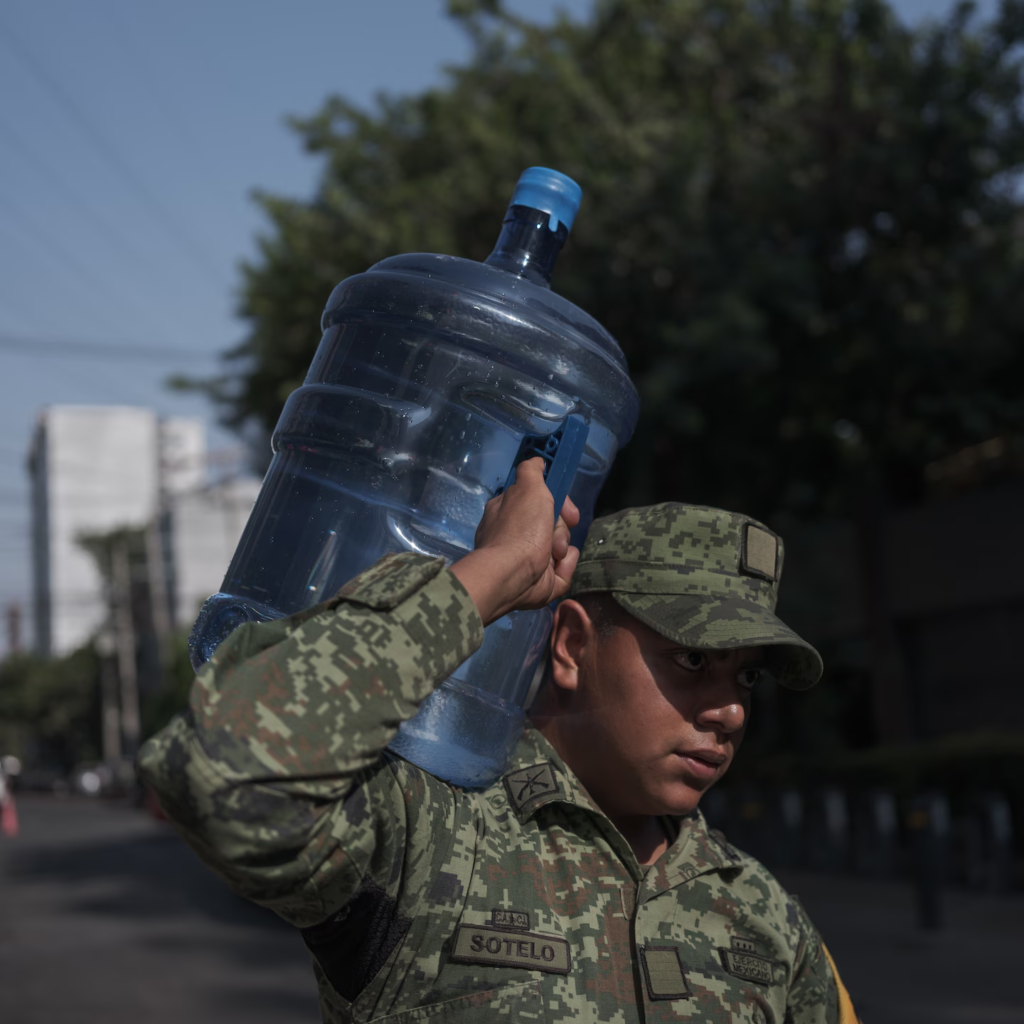
A soldier in the Mexican army carries a jug of water. (Luis Antonio Rojas/For The Washington Post)
Why water supplies are low
Officials said they reduced the flow from the Cutzamala in October to save water and perform maintenance. In January, they announced cuts to hundreds of neighborhoods, mainly to the west of the city center — including wealthy neighborhoods like Polanco and Lomas de Chapultepec. Some residents protested against the low water supply.
“In Mexico City, there is a historical and critical issue of inequality in the access to water,” said Fernanda Mac Gregor, a doctoral student at National Autonomous University of Mexico who has published research on climate change risks to the city. “We are already facing many warnings and they will continue to worsen, and not only in terms of water and climate change, but in terms of inequality and poverty.”
Supplying water to 22 million people across a mountain valley is no small feat. The Cutzamala system primarily uses surface water, according to the National Water Commission (CONAGUA). The rest is pumped from underground aquifers, although that has produced significant sinking around the city.
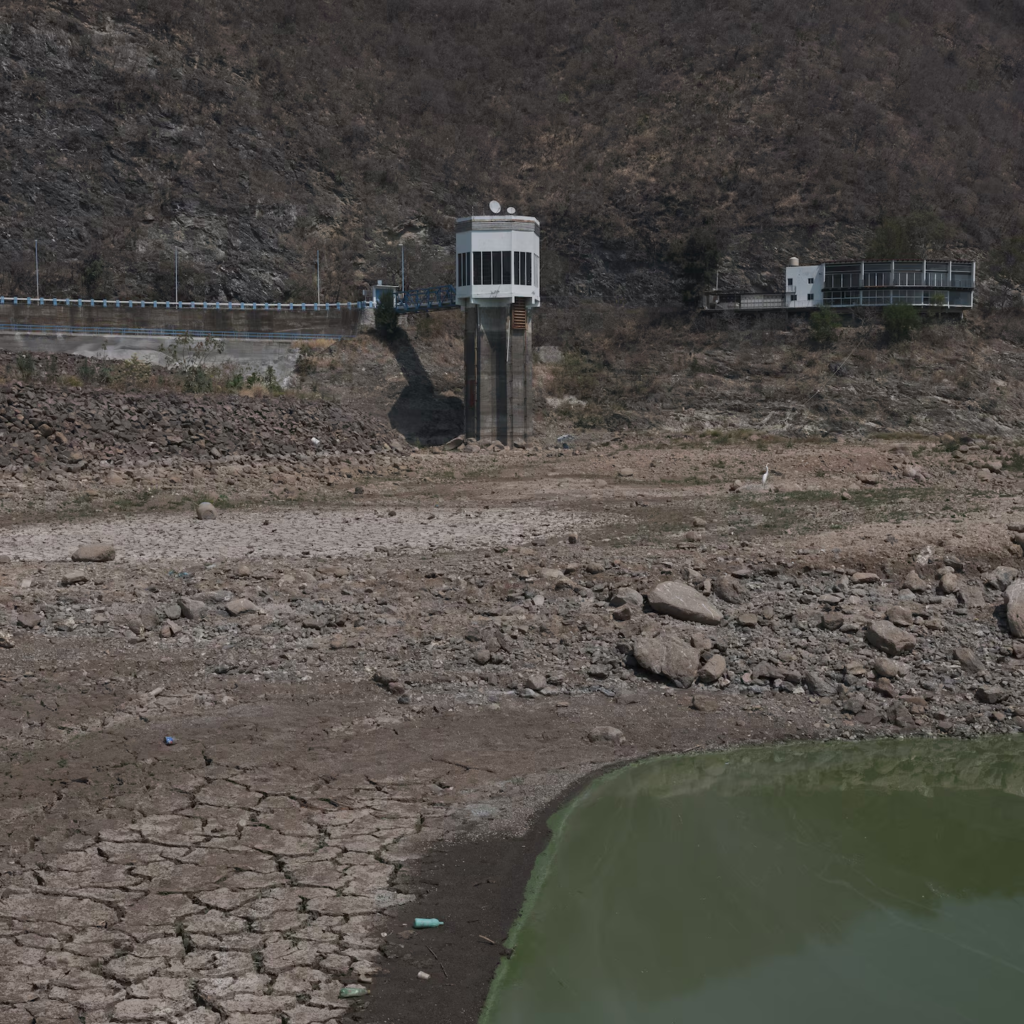
Low water levels at the Miguel Aleman dam. (Luis Antonio Rojas/For The Washington Post)
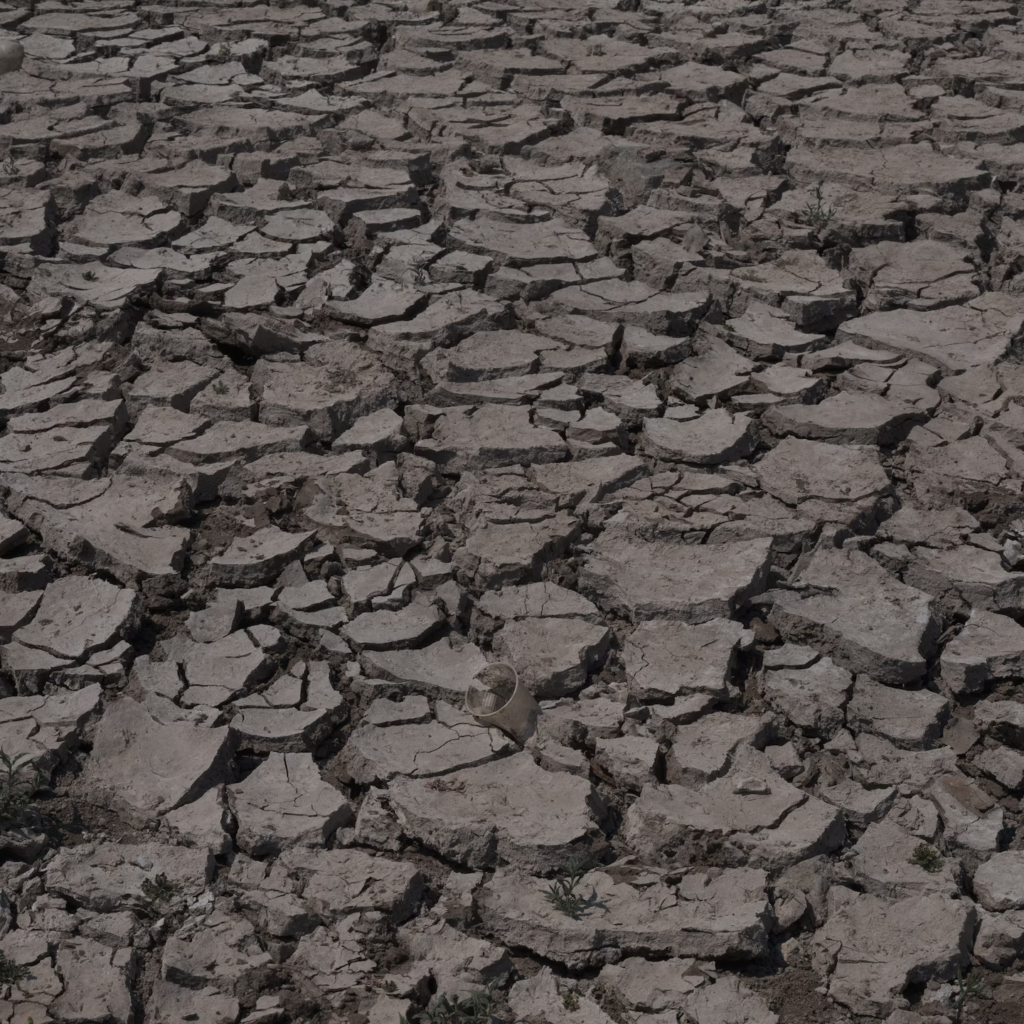
A dry bed at the Miguel Aleman dam. (Luis Antonio Rojas/For The Washington Post)
But the water in the Cutzamala system has been dwindling. In the past three years, the basin has received decreased rainfall, according to CONAGUA — about one-third less in 2022 and 2023 compared to the past 40 years, according to data from the European Union’s Copernicus Climate Change Service.
Other factors also play a role. The recent El Niño pattern brought hotter and drier conditions last summer. Human-caused climate change has warmed Mexico around 1.6 degrees Celsius (2.9 degrees Fahrenheit) since preindustrial times. Because of the urban heat island effect, parts of Mexico City are even warmer at 3 to 4 degrees C warmer than previous decades, according to the Climate Change Research Program at the National Autonomous University of Mexico.
As a result, drought has been persistent both in Mexico City and over much of the country. As of April 30, the North American Drought Monitor classified the entire federal district under a “severe” drought. The drought has caused reservoirs connected to the Cutzamala to dry up.
“It’s a complex ball of wax in predicting whether or not we’re actually going to run out [of water],” Boyes said. “I’m not sure if it’s going to rain or not, and that will make a huge difference.”

Graffiti that reads “die, politicians” near a water leak in Xochimilco. (Luis Antonio Rojas/For The Washington Post)
Plans for the future
Lack of rain isn’t the only problem. The city is also grappling with poor water management and infrastructure. Nearly 40 percent of water is lost in transit because of leaky pipes, according to Mexico’s federal district water operator, SACMEX.
The pipes would cost billions of dollars, but it could help reduce leakage as low as 10 percent, said Gabriel Quadri de la Torre, a federal congressman for the Mexico City district of Coyoacán. But he added, “It is very difficult to think that the Mexico City government will have this amount of money to invest in the network.”

Adán Ríos Nava, who lives in the Benito Juárez borough, sits during a protest over contaminated water. This spring, residents there said their tap water smelled like gasoline; the city government later said water in some neighborhoods was contaminated with oils and lubricants. (Luis Antonio Rojas/For The Washington Post)

María Marta Zarco, of the Benito Juárez borough, protests water contamination. (Luis Antonio Rojas/For The Washington Post)
Quadri de la Torre, who is up for reelection next month, said his district is not significantly affected by low water supply because they get most of their water from underground sources. But, if the water shortages persist, he fears that his district’s water may eventually be redistributed to other parts of the city and affect their supplies.
“Public-private partnerships will be needed to solve this problem,” he said. “The new project to bring water to Mexico City should be a project that is not affected by climate change, by drought.”

Julio César Mendoza Fragoso, who lives in the Magdalena Contreras borough, gets water from a truck. (Luis Antonio Rojas/For The Washington Post)
Coping with water shortages
The water issues are not new for Andrea Salazar and others in the city.
Salazar, who lives in Xochimilco, a working-class neighborhood, only receives water on Fridays and Mondays for around five hours — about 1 a.m. to 6 a.m. — because of that area’s limited water supply. She and her family of five collect around 150 liters (40 gallons) of water during that time, which is supposed to last for the entire week.
“When the water arrives, we can’t sleep,” she said. She’s thought about paying for water from what is known as a pipa truck but hasn’t yet.
Once a week, she and her daughters travel to the local public laundry station, where they hand wash their clothes with public water. Others at the station have similar experiences.

Catalina López Hernández hauls water from a tank truck delivery point to her home in the Magdalena Contreras borough. (Luis Antonio Rojas/For The Washington Post)

Luis Enrique Morales, a water tank truck driver from the local government, arranges a hose to provide water at a home in the Magdalena Contreras borough. (Luis Antonio Rojas/For The Washington Post)

María Teresa Arredondo washes a blanket at a community laundry area. These spaces have traditionally existed in popular and old neighborhoods of Mexico City and are used by families facing water issues in their homes. (Luis Antonio Rojas/For The Washington Post)
María Teresa Anedondo, who has a family of six, travels from about 15 to 25 minutes away to wash her clothes here. She called for the city’s public water truck several times, but said it hasn’t come.
At a nearby public well station, people on foot, bike and horse gathered to fill up water jugs for their homes and families. The well is a lifeline and a place to catch up with others. If there’s a line, it can go slowly; it takes about two minutes to fill a 20-liter (5-gallon) jug, and many people bring multiple jugs.
Juan Salazar Paez, 72, visits the well twice a day to ensure he has enough water for his farm and family. He takes about 80 liters (20 gallons) each trip, strapping four containers to the back of his horse. He lives with his sons, hauling the water to the house for the family and then a separate location for his crops. He said the water is enough if he rations it properly among his fruit trees and corn.

Juan Salazar Paez fills up a jug with water from a public faucet next to a well in Santa Cruz Acalpixca. Salazar doesn’t receive water at home and has to haul water jugs daily with the help of his horse. (Luis Antonio Rojas/For The Washington Post)
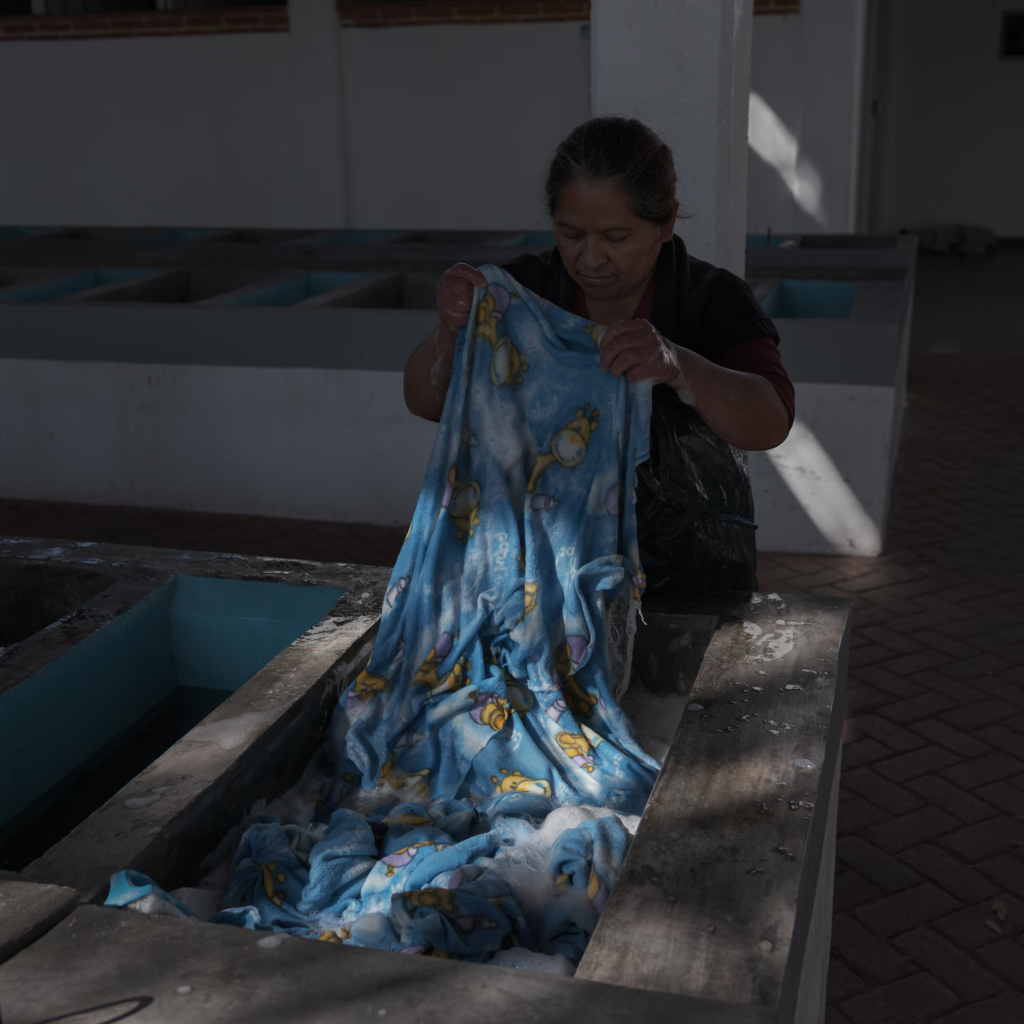
Beatriz Rodriguez washes a blanket at a community laundry area. (Luis Antonio Rojas/For The Washington Post)
Paez said spending hours of his day retrieving and transporting water has become a normal way of life. He’s aware of the city’s drought and low reservoir levels, but said he doesn’t see much that he can personally do. Even with the upcoming national and local elections, Paez said that health care issues are more important to him than water.
“Will the water issue be resolved? It will never be resolved,” said Paez. “The water comes from above. If the Holy Boss gives it to us, we’ll have water. If not, we’ll be dry, like now.”
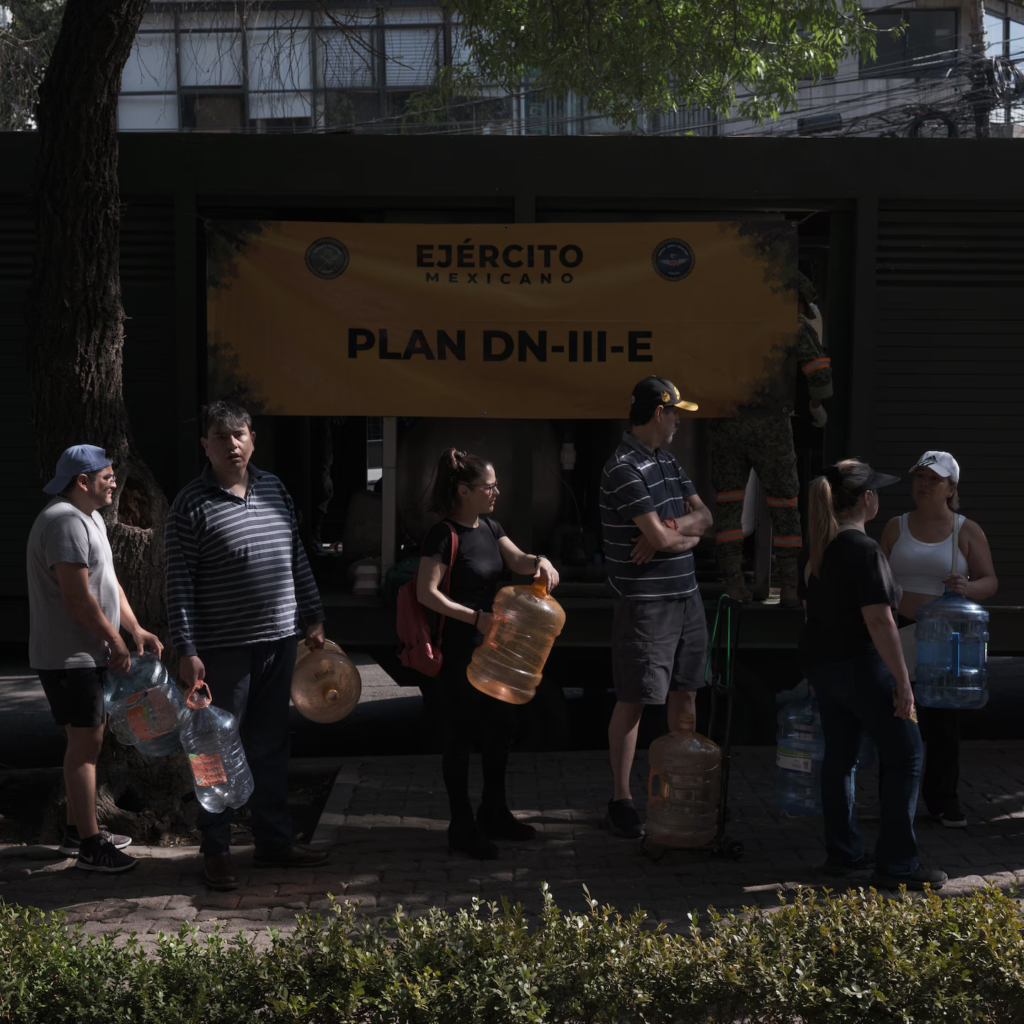
Residents of the Benito Juárez borough wait for water from the Mexican army. (Luis Antonio Rojas/For The Washington Post)
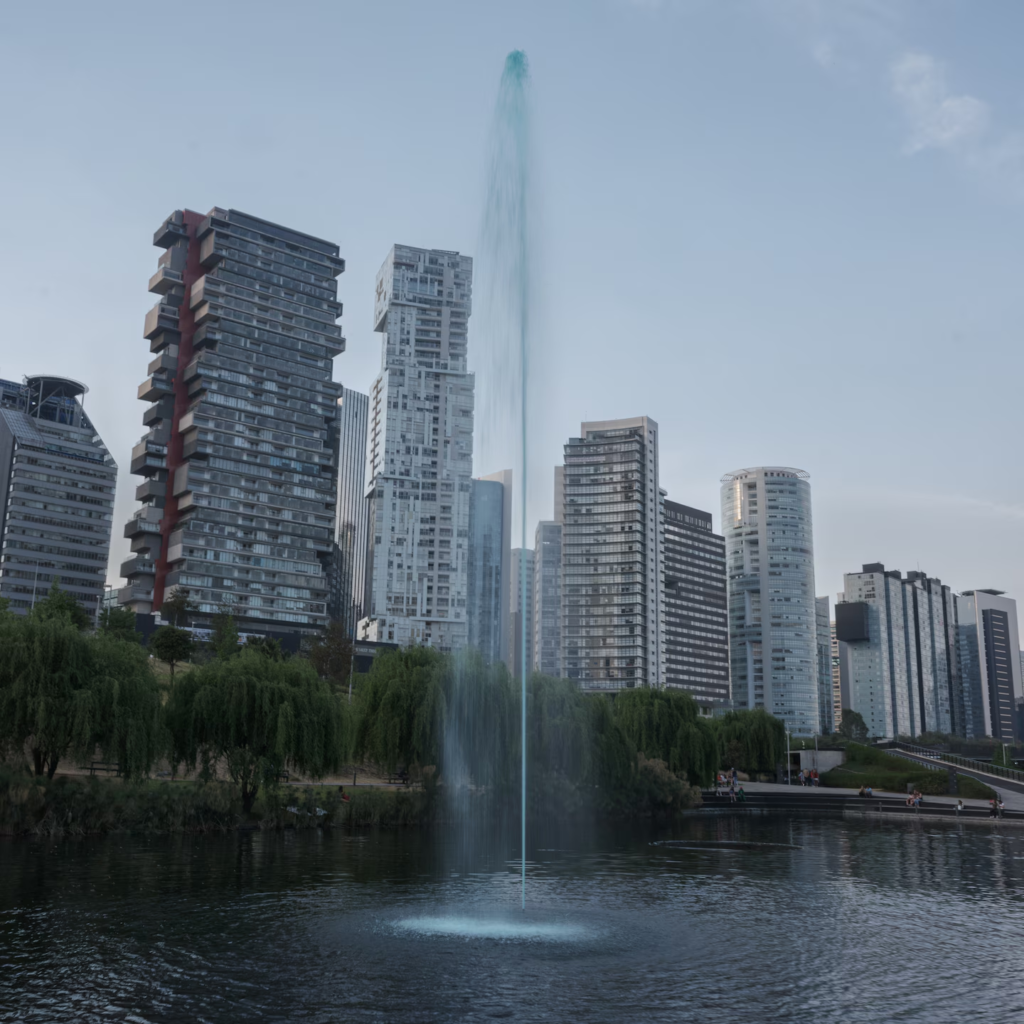
A fountain in La Mexicana park in Santa Fe, a high-end residential district on the outskirts of the city. (Luis Antonio Rojas/For The Washington Post)
Twenty-four miles away in the upscale neighborhood of Polanco, Campos has been changing some of her daily habits to conserve water. As she waits for her shower to warm up now, for example, she collects extra buckets of cold water to flush her toilets.
Annika Raiha, who also lives in Polanco, said she’s been calling for pipa trucks since January. She hasn’t had to pay extra yet because her building fees have covered the extra expenses, but she was told to take shorter showers and not let the water run while doing dishes.
“I was more surprised that it had never affected us before. But this year, it already reached us here too,” said Raiha, who said she and her husband are “very worried about the future with the climate change.”
Some people walking through the neighborhood said they didn’t believe that Polanco was having the same water problems as other parts of the city. But Campos and her husband, Rafael Garcia, disagree. Almost no one in the city is immune from the crisis now, Garcia said.
“We’re not fine here,” Garcia said.
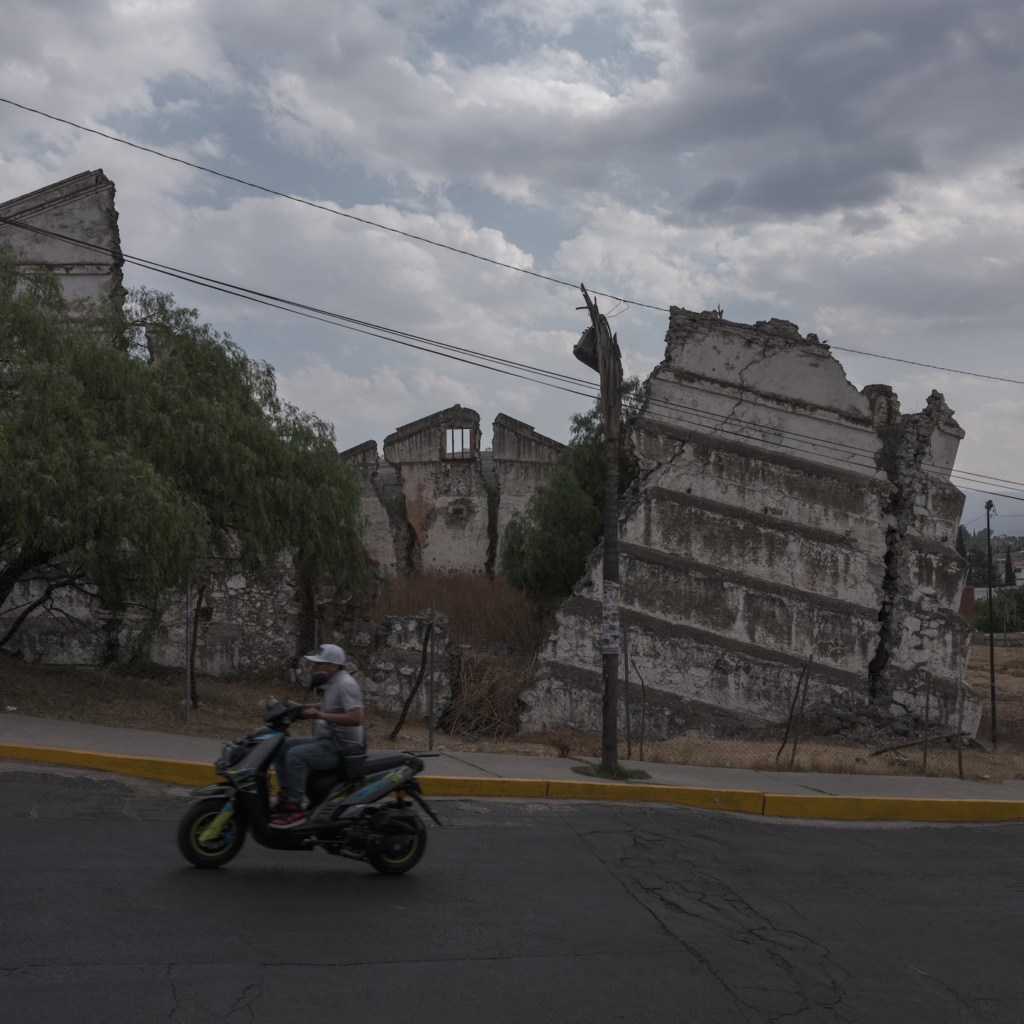
A bike passes by a fracture caused by sinking land on an abandoned historic ranch. (Luis Antonio Rojas/For The Washington Post)
Mary Beth Sheridan, María Gabriela Martinez and Luis Antonio Rojas contributed to this report.

By Kasha Patel Kasha Patel writes the weekly Hidden Planet column, which covers scientific topics related to Earth, from our inner core to space storms aimed at our planet. She also covers weather, climate and environment news. Twitter
Here are more “ETs” recorded from around the planet the last couple of days, their consequences, and some extreme temperature outlooks, as well as any extreme precipitation reports:
Here is More Climate News from Sunday:
(As usual, this will be a fluid post in which more information gets added during the day as it crosses my radar, crediting all who have put it on-line. Items will be archived on this site for posterity. In most instances click on the pictures of each tweet to see each article. The most noteworthy items will be listed first.)